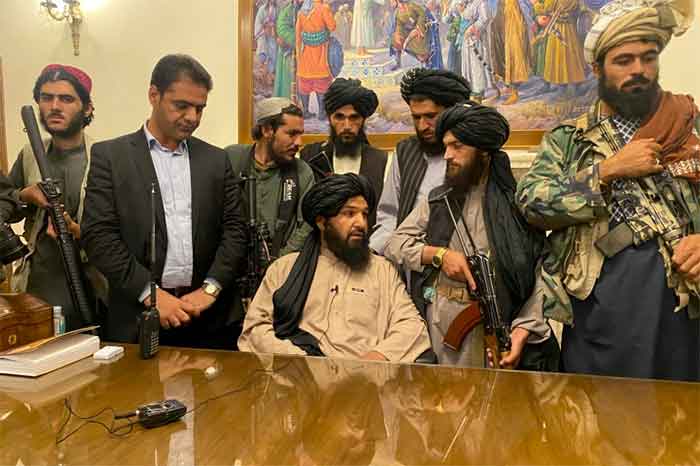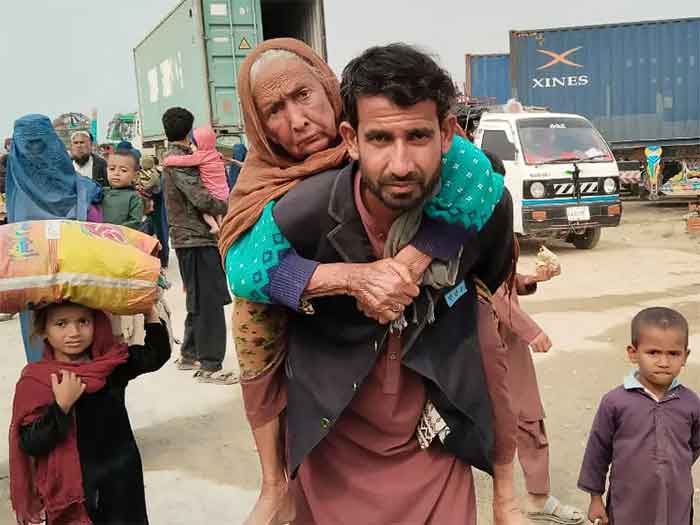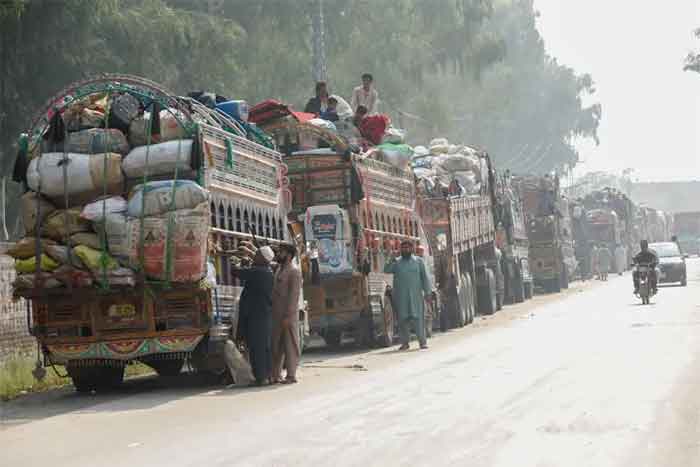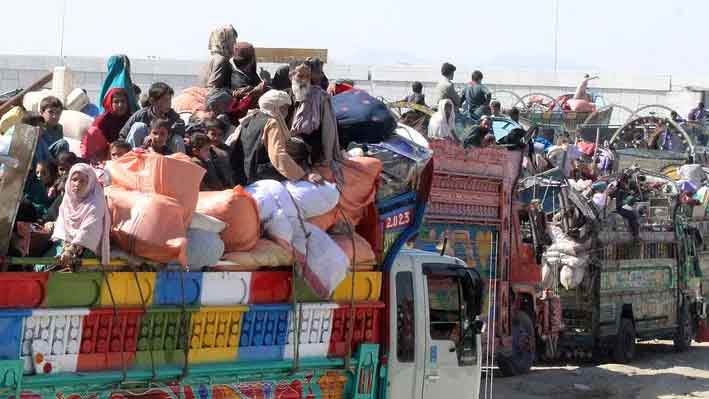
Taliban’s re-capture of Afghanistan was virtually certain after the February 2020 (Doha) US-Taliban deal concerning US forces pull-out from Afghanistan. Afghanistan’s immediate and regional neighbours had plenty of time to re-strategize the forthcoming situation. However, Taliban’s easy capture of Kabul due to the unexpectedly rapid collapse of Afghan forces trained and equipped by USA, has surprised all.
Reports of Afghanistan President Ashraf Ghani fleeing Kabul in a helicopter loaded with cash, leaving the Afghani people to the tender mercies of Taliban, indicate Taliban’s political-military control over all of Afghanistan. This has obvious ramifications for India and the entire region.
India’s UN Ambassador T.S.Tirumurti has noted that there were “a few opportunities” amidst the challenges in the current situation in Afghanistan. He also reportedly stated that “If there is a zero-tolerance for terrorism in all its forms and manifestations, and it is ensured that the territory of Afghanistan is not used by terrorist groups to threaten or attack any other country, then Afghanistan’s neighbours and the region would feel safer”.
Reference to “a few opportunities” may indicate hopefulness, but the latter statement sounds like a plea to Taliban (not named, of course) not to continue their proven terrorist proclivities and human rights violations, so that all would feel safer.
Pakistan PM Imran Khan has virtually welcomed Taliban to Kabul, and Iran President Ebrahim Raisi has spoken of US withdrawal as restoring life, security and lasting peace in Afghanistan. Clearly there is a celebratory atmosphere connected with Taliban’s victory, although Afghanistan’s public – and especially its female population – are sure to be seriously and viciously abused.
In these circumstances, the repercussions of Taliban’s victory on India bear a closer look.
Some relevant factors
Perhaps the most important factor is Pakistan’s renewed ability to further its Kashmir policy and bleed India “with a thousand cuts”. This gets a boost because Pakistan can enable Taliban fighters ingress into POK with logistic and other support along the LOC. How soon Pakistan and/or Taliban will be able to commence this, and some of the factors which may influence the timing and extent of this may be:
(1) The political strength and stability of PM Imran Khan in the face of Pakistan’s clergy, and Pakistan’s domestic economic condition,
(2) The extent and rapidity of pressure from the international community on the Taliban regime, and the period for which this may limit Taliban’s attention and resources to stabilize and secure its hold within Afghanistan,
(3) Taliban’s need to establish itself within Afghanistan in the face of its own (silenced for now) tribal warlords,
(4) Pakistan’s calculation to take advantage of India’s domestic political commitments, especially State and general elections in India,
(5) Pakistan’s coordination with China’s belt-and-road initiative (BRI) and counting on China for financial-eonomic support and support in UNSC.
(6) Pakistan’s and China’s assessment of India’s strengths and weaknesses
Wider concerns
Abrogation of Article 370 and subsequent measures taken, has alienated the bulk of the Kashmiri population from the “idea of India”. This is not a comment on the desirability or otherwise of abrogation, but on its effect. The levels of militancy/insurgency in Kashmir may have reduced in the two years since abrogation as claimed by government sources, but this may well increase, even escalate, as and when Taliban presence and influence appears within Pakistan and POK.
Pakistan’s renewed Kashmir initiative will surely trigger increased attention of our military (Army, Navy & Air Force) towards Pakistan, necessitating increased force deployment or re-deployment. This need comes even while the creation of Theatre Commands is in progress, and physical re-positioning, joint training, infrastructure provision, and setting up communication systems and protocols, are incomplete. This is not a comment on the desirability or otherwise of creating Theatre Commands, but to mention that physical and organizational re-grouping of hardware and personnel assets, and building Inter-Services cooperation at all levels of command, is not a task which can be completed to operational levels in a couple of months.
India is very likely to be presented with a credible two-and-a-half front military threat, with real possibility of the Kashmir “half-front” commitment growing.
Even in the unlikely event of state and central governments with their State Police and CAPF being able to contain militancy and insurgency, India’s military will need time for training of army units and formations presently deployed on IS and CI duties, and for their move to operational locations, if required to revert to their primary role.
China’s intransigence regarding the stand-off in Aksai Chin and eastern Ladakh, and significantly upgrading its military infrastructure and assets across Tibet, may indicate Xi Jinping’s intention to implement Mao Zedong’s 5-fingers strategy to “reclaim” its territories to the west of China. [The 5-fingers are Ladakh, Nepal, Bhutan, Sikkim and NEFA (now Arunachal Pradesh), spanning across the entire Himalayas]. Ladakh is its so-called ‘first finger’. It is in furtherance of its China-Pakistan Economic Corridor (CPEC) as part of its 2013 Belt-and-Road initiative, and seeks to link Aksai Chin with Pakistan’s Gilgit-Baltistan POK region, along River Shyok. Increasing credible threats from China’s other 4-fingers may force India to spread its military resources across our Himalayan border.
China’s ruthless suppression of Buddhists in Tibet and Uighur Muslims in Xinjiang is less to do about religions and more about crushing resistance of opposition to the hegemony of ethnic Chinese of mainland China and its military occupation. China’s attention and resources turned to this on-going ethno-religious pogrom may to some extent hamper its 5-fingers initiative against India.
China has superiority over India in cyber warfare, due to its technological capacity and operationalising its PLA Strategic Support Force (PLASSF). This cyber capability can be covertly or overtly deployed against India’s military or civil infrastructure, to hamper the speed or volume of military responses to PLA’s initiatives.
India’s immediate neighbours – Nepal, Myanmar, Bangladesh, Sri Lanka – are under China’s influence and perhaps even clandestine control. These countries will at best remain unhelpful in the event of India-China hostilities.
Sovereignty
Taliban’s victory in Afghanistan clearly raises strategic security concerns for India. Although it was perhaps foreseen, its timing is particularly inconvenient. In order that India may protect and preserve its regional ascendancy and external security in the light of domestic, regional and international considerations, India needs to devise and step up diplomatic initiatives and economic arrangements with its immediate and regional neighbours, even if it may mean displeasing USA. Further, on the domestic front, social unrest and violence which detracts from defence effort, must be reduced by sincere initiatives beginning at the top levels.
India’s increasing participation in the 2007 Quadrilateral Strategic Dialogue (“Quad” involving Japan-India-Australia-USA) may not counter China’s military-economic hegemonic initiatives against India, but conveys the message that India is not alone.
USA’s designs in South and Southeast Asia and the Western Pacific, are meant to counter China’s rise threatening to eclipse USA. However, India’s status as a subordinate strategic partner of USA declining to becoming militarily subordinate to USA’s designs must be prevented. India’s military can be relied upon to defend our country, and India’s political-military sovereignty cannot be compromised, Taliban’s victory notwithstanding.
Major General S.G. Vombatkere, VSM, retired in 1996 as Additional DG Discipline & Vigilance in Army HQ AG’s Branch. He is a member of the National Alliance of People’s Movements (NAPM) and People’s Union for Civil Liberties (PUCL). With over 500 published papers in national and international journals and seminars, his current area of interest is strategic and development-related issues. E-mail: [email protected]

















































